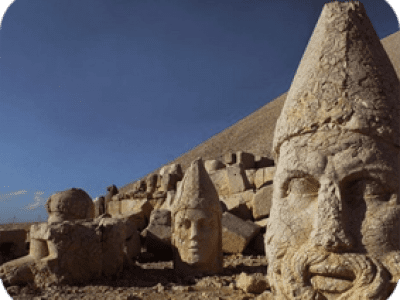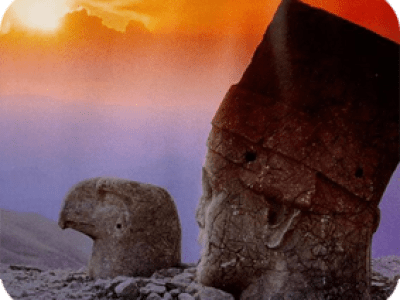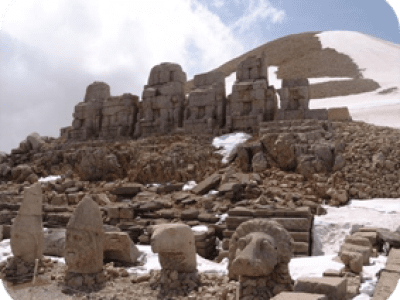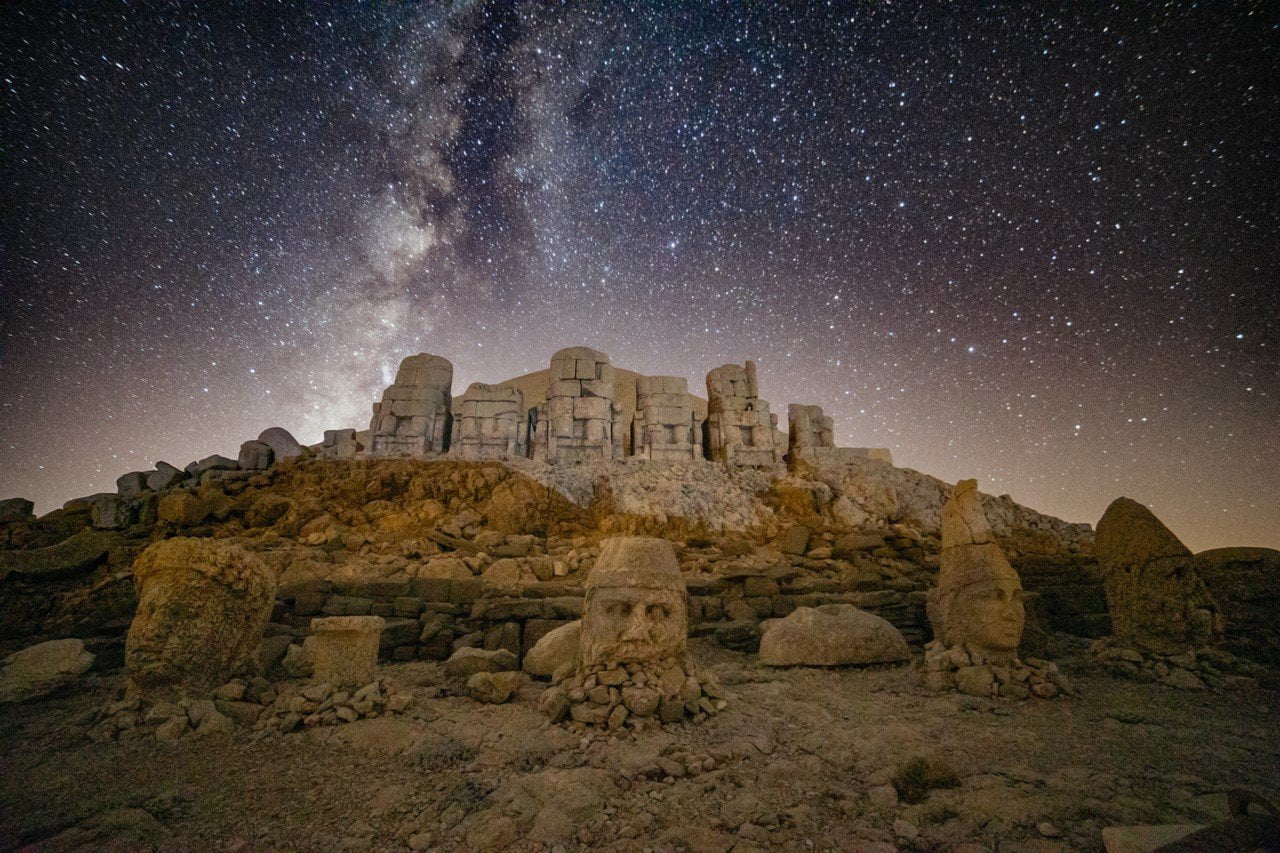NEMRUT DAGI (MT NEMRUD)
Nemrut Dagi (Mt. Nemrut) is the first impressive peak rising from a flat plain in Northern Mesopotamia and stretches to a height of 2150 metres. It is matchless in its historical treasures. The original peak was removed and in its place was constructed the Tumulus of Antiochos 1, one of the kings of Commagene when it was at its height of power and art expression during the 1st century B.C. This interesting structure was made by heaping up pieces of rocks to make the 50 m x 150 m mound. The east and west terraces of this mound are open-air temples. On these terraces are statues of lions, eagles, five gigantic god statues, four male and one female. Dexiosis type reliefs are in a good state of preservation. On the western terrace the heads of these statues have been toppled but are in good condition. These heads alone are taller than a man. On the eastern terrace the 9m high statues are well enough preserved to see the gods sitting on their thrones. The statues are in the same order on both terraces; Apollo, Tyche the Commagene god of fertility, Zeus, Antiochus and Hercules. Reliefs of the genealogy of Antiochus as well as others are now being restored. Opposite, at the other end of the terrace, is an altar with several steps leading up to it from all four sides.
ADIYAMAN AND ENVIRONS
This area lies in the southeast of Turkey in the central Firat (Euphrates) region. According to archaeological research the history of the area goes back to the Paleolithic Age. During the Neolithic Age (8000-7000 B.C.) Gritille, Hayaz, Ancoz and Samsat were the main culture centres. After the Early Bronze Age the Hittites lived here and formed the Anatolian Federation. The region was populated successively by Mitanni, Urartians, Assyrians, Persians, Macedonians, the people of Commagene, Romans, Byzantines, Abbasidas, Omayyads, Seljuks, i Ikhanians, Mameluks and the Ottoman Empire. In the centre of Adiyaman are the remains of a fortress built by the Omayyad Caliph, Hisn-i Mansur, in the VIII century and later restored by the Seljuks. Today this fortress is a park. A mosque, Ulu Cami, from the 14th century is of importance. A colourful place for shopping is the Oturakçi Çarsisi where you can buy local handicrafts, rugs, kilims and saddle bags. The ancient city of Perre, today called Pirin, is 5 km from Adiyaman. The city ruins and 208 caves in the rocks, where there are human reliefs, are of historical importance. At the Adiyaman Museum you will find on display archaeological and ethnographical finds from various historical periods. The museum is open everyday except Mondays.
In order to reach Mountain Nemrut, which is 83km from Adiyaman and 48km from Kahta, one proceeds by minibus or taxi through Narince and Karadut up to 1km from the top. Here there is a rest area. Walking along a path from the rest area for 20 minutes one reaches the tumulus. The view is spectacular and it is worth the climb to view the sunrise and sunset. To be enveloped by this natural beauty and live in history will leave one with an impression for a lifetime. May October is the best time to visit the region.





0 Comment